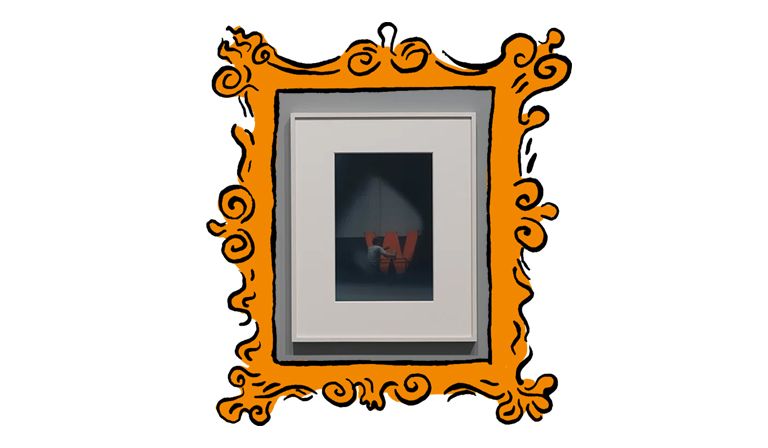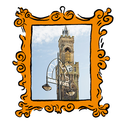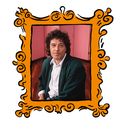“Pedestrian.” Why does this word conflate walking through a city with something dull and boring? Despite the best efforts of so many writers and artists across time, from Charles Dickens to Guy Debord, the association persists. It’s likely for this reason the world was so late in coming round to the work of Saul Leiter.
Leiter—the subject of a new retrospective at Milton Keynes’s MK Gallery—was a pedestrian as much as he was a photographer. Unlike his increasingly globetrotting contemporaries in the mid-20th century, particularly those in the esteemed Magnum photography collective, he almost never left the handful of blocks in New York’s East Village that he had called home since leaving his family behind in Pittsburgh at the age of 23. His method for taking photographs was not especially radical, revealing or noteworthy. He would go for a walk, every day, and capture whatever took his fancy.
Yet it was from this modest daily routine that Leiter developed an astounding body of work. Some 50,000-odd photographs, many of which would remain underappreciated or unseen until the publication of Saul Leiter: Early Colour in 2006. Nowadays, many photographers would consider Leiter one of the greatest who ever lived, as somebody who pioneered the use of colour photography when the artistic currency of black-and-white seemed unassailable. At the MK Gallery, which over the years has been quietly building a reputation as one of the most interesting galleries in the country for photography, we are offered another chance to remember what made him—what still makes him—so good.
The gallery’s exhibition is one of the largest ever staged in the UK, with many photographs displayed for the first time anywhere. The curator, Anne Morin, has deliberately and cleverly not arranged anything in chronological order, emphasising the natural wholeness of Leiter’s output while allowing us to look past notions of “progression” or “artistic development” that so often plague big retrospectives. Instead, we are at our leisure to absorb Leiter’s handful of recurring themes and interests: silhouettes of men with their faces obscured by the brims of their hats; women half-seen from the other side of misted café windows; streets covered in slush or snow; figures peeping out from beneath shop canopies; umbrellas grouped about lampposts, like flocks of tropical birds sheltering from a monsoon.
The second thing you might notice is that nothing ever really happens in any of Leiter’s photographs. And yet, could you call these “fleeting” moments? I don’t think so. What we’re seeing here, cumulatively, are the aspects of a city that are permanent and everlasting, so long as there are humans around to occupy it. What we’re being told is that these moments have happened and will happen again and again and again. If you missed it the first time, you only have to wait another day.
Leiter—who once laughingly said that he’d “spent his whole life just trying to survive”—was against hard work. Many of his close friends and acquaintances were puzzled by this supposed lack of ambition. He rarely travelled abroad or deviated from his routines or choices of media which, besides photography, also included writing and small gouache paintings. The abstract expressionist Franz Kline chivvied him once by saying that, if only he worked in a larger format, he could’ve become “one of the boys”. “Not umbrellas again!” moaned one lab assistant as they were developing his latest batch of film; “I like umbrellas!” was Leiter’s response. His insistence that all he was ever trying to do was just one thing—capture beauty—was considered inadequate in an artistic environment that wedded aesthetic sensibility to ideological clout.
But try looking at any of Leiter’s photographs today and see how that argument plays out. I’m thinking of one right now, of a pond in Central Park. The perspective is such that it is impossible to tell where the water’s reflection begins or ends; a woman and a young boy stand looking up at a shimmying skyscraper that is the wrong way round. Furthering the illusion are two black tree limbs that cut the image into several pieces, making it appear as if we’re looking at this scene through shards of broken glass. The sky is a sharp blue, the same colour as the woman’s coat.
Maybe it was just too early in the morning, but I can’t properly explain what I felt when I came across this image. It was something like a surge of empathy for these two people, who have their backs to me, who are so like so many other strangers I have seen in my day-to-day life. And I felt this empathy far more strongly than I should have, if I’m honest—which is perhaps just a roundabout way of saying I was moved.
Enough years may have passed by now that we’re more familiar with Leiter and less unsure about his place in art history. But I challenge anybody, even Leiter’s biggest fans, to leave the MK Gallery without some sense that you’ve stumbled upon something very special for the first time.











